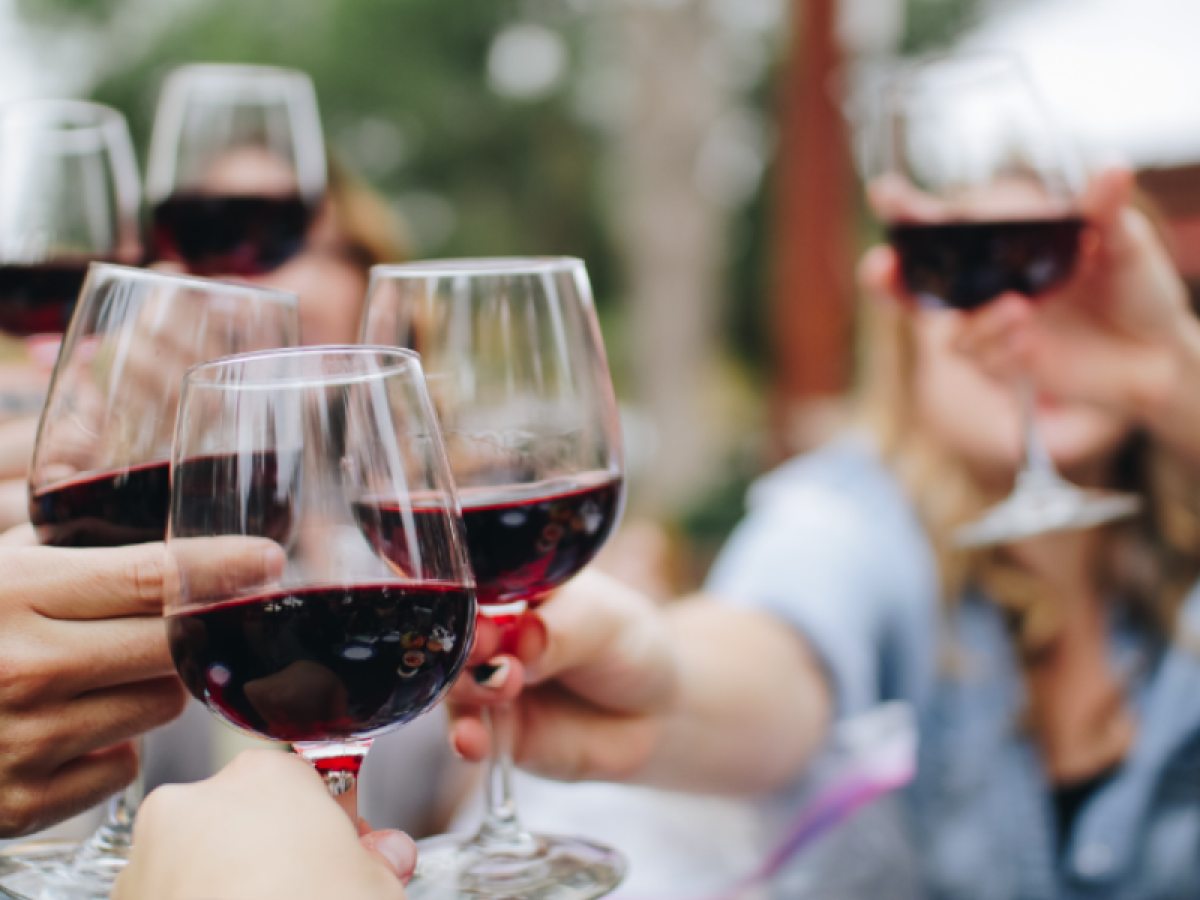Health, Wellness, Mindfulness, Dry July, or just a fad? What’s motivating us to try NOLO wines

In May 2021, The Sydney Morning Herald reported that non-alcoholic wine is Australia’s fastest-growing drinks category. Global Data Company, IRI, estimated the market’s growth at an annual rate of 800 percent, possibly worth as much as $15 million by the end of 2021.
According to the Centre for Alcohol Policy Research at La Trobe University, the number of 18 to 24-year-old Australians who don’t drink has doubled in the past 20 years. Capturing this new opportunity, health-conscious drinks entrepreneurs and winemakers alike are finding success by tapping into a new consumer segment driven by their desire for wellness, mindfulness, and health.
Cue ‘Dry July’, and a flurry of social media influencers are spruiking their choice to go alcohol-free for a month, engaging in paid promotions of zero-alcohol beverages, from wines, beers, spirits, and even seltzers that claim to be vegan, gluten-free, with no added sugar, and containing milk thistle to tackle inflammation and support a healthy liver.
So is the no and low alcohol (NOLO) wine market here to stay? And what’s really driving consumers to make the shift? And for the many of us who might be hesitant, what are the barriers stopping us from trying NOLO wines; is it the cost, taste, or that it just doesn’t feel the same? At the University of Adelaide’s Business School, we’ve been researching consumer trends around NOLO wine consumption and collaborating with AWRI to further understand the technical aspects involved in NOLO wine production. In this excerpt from our research, we dive into the motivations and barriers for trial and consumption of NOLO wines.
Motivators
Recent industry reports, along with published academic literature, present a range of motivating factors contributing to the rise in consumption of NOLO wines. According to London based IWSR Drinks Market Analysis, almost a third of consumers aged 18-34 choose NOLO wine because they are on a diet. In contrast, others simply choose it for moderation when they want to feel part of the occasion but still drive home.
Almost 200 academic articles have been published regarding consumer behaviour related to wine and health, with many of these identifying reasons that consumers abstain from wine or seek NOLO alternatives. These studies have identified that consumers are carefully considering the caloric content of wine (Annunziata et al 2015), perceived healthiness (Annunziata et al., 2016), pregnancy risks (Corrales-Guitierrez et al., 2019), cancer risks (Lizama et al., 2019), and nutritional information on labels (Vecchio et al., 2018), the ability to drive (Saliba et al. 2013), perceptions that it might be cheaper (Bruwer et al., 2014), staying in control (Bruwer et al., 2014) in their wine-related decision making.
What’s stopping us?
Not surprisingly, the most common barrier identified in both industry and academic research regarding NOLO wine trial and consumption is the perception of its taste. Consumer perceptions that NOLO wine tastes inferior is widely reported (Chan et al., 2012, Hyytianen, 2020, Bucher et al., 2018, Deerover et al. 2021, Bruwer et al, 2014, Saliba et al., 2013). Other significant barriers include a lack of awareness among consumers (Bruwer et al., 2014, Bucher et al., 2018, Chan et al., 2012) embarrassment (to be seen drinking NOLO wine in a social setting), as well as missing out on the “normal” effect of drinking alcohol (Bruwer et al., 2014).
Weighing up these motivators and barriers, it’s quite clear that increasing perceptions of NOLO wine’s taste and quality, whilst enhancing awareness, are the key factors to overcome to tap into the highly valuable ‘sober curious’ and ‘generation-sensible’ consumer segments.
Dr Rebecca Dolan is a Senior Lecturer Marketing and Wine Business, as well as Wine Business Program Director at the University of Adelaide. Her key research areas include the analysis of consumer behaviour, digital media, shifting consumer trends, and customer engagement, particularly concerning wine. If you would like to learn more about our research on NOLO wine, you can contact Dr Rebecca Dolan directly. If you are interested in studying Wine Business with the University of Adelaide, please our Wine Business website.
The article is developed based on an ongoing joint research project by Dr Rebecca Dolan (University of Adelaide), Associate Professor Armando Corsi (University of Adelaide), Associate Professor Steve Goodman (University of Adelaide) and Dr Wes Pearson (AWRI). The author would also like to acknowledge Gemma Tripodi for her work in conducting the literature review for the project.
References:
Annunziata, A., Pomarici, E., Vecchio, R., & Mariani, A. (2015). European consumers’ interest toward nutritional information on wine labeling: A cross-country analysis. Paper presented at the BIO Web of conferences.
Annunziata, A., Pomarici, E., Vecchio, R., & Mariani, A. (2016). Do consumers want more nutritional and health information on wine labels? Insights from the EU and USA. Nutrients, 8(7), 416.
Bruwer, J., Fong, M., & Saliba, A. (2013). Perceived risk, risk-reduction strategies (RRS) and consumption occasions: Roles in the wine consumer's purchase decision. Asia Pacific Journal of Marketing and Logistics.
Bucher T, Deroover K & Stockley C 2018, ‘Low-Alcohol Wine: A Narrative Review on Consumer Perception and Behaviour,’ Beverages, vol. 4, no. 4.
Chan, S. M., Adzahan, N. M., Ab Karim, M. S., Karim, R., Lasekan, O., & Regenstein, J. M. (2012). Consumer preferences and perceptions on dealcoholised wine. Journal of Food Products Marketing, 18(1), 65–77.
Corrales-Gutierrez, I., Mendoza, R., Gomez-Baya, D., & Leon-Larios, F. (2019). Pregnant women’s risk perception of the teratogenic effects of alcohol consumption in pregnancy. Journal of clinical medicine, 8(6), 907.
Deroover, K, Siegrist, M, Brain, K, McIntyre, J & Bucher, T 2021, ‘A scoping review on consumer behaviour related to wine and health’, Trends in Food Science & Technology, vol. 112, pp. 559–580.
Hyytiäinen, J. (2020). Low alcohol wine consumption in Finland.
Lizama, N., Rogers, P., Thomson, A., Slevin, T., Fritschi, L., Saunders, C., & Heyworth, J. (2016). Women's beliefs about breast cancer causation in a breast cancer case–control study. Psycho‐Oncology, 25(1), 36-42.
Saliba, A. J., Ovington, L. A., & Moran, C. C. (2013). Consumer demand for low-alcohol wine in an Australian sample. International Journal of Wine Research, 5, 1-8.
Vecchio, R., Annunziata, A., & Mariani, A. (2018). Is more better? Insights on consumers’ preferences for nutritional information on wine labelling. Nutrients, 10(11), 1667.
Study
We offer a range of business related degrees, enabling students to choose their own path and become career ready.

